AMD A10-7800 Review: Testing the A10 65W Kaveri
by Ian Cutress on July 31, 2014 8:00 AM ESTCPU Benchmarks
The dynamics of CPU Turbo modes, both Intel and AMD, can cause concern during environments with a variable threaded workload. There is also an added issue of the motherboard remaining consistent, depending on how the motherboard manufacturer wants to add in their own boosting technologies over the ones that Intel would prefer they used. In order to remain consistent, we implement an OS-level unique high performance mode on all the CPUs we test which should override any motherboard manufacturer performance mode.
HandBrake v0.9.9: link
For HandBrake, we take two videos (a 2h20 640x266 DVD rip and a 10min double UHD 3840x4320 animation short) and convert them to x264 format in an MP4 container. Results are given in terms of the frames per second processed, and HandBrake uses as many threads as possible.
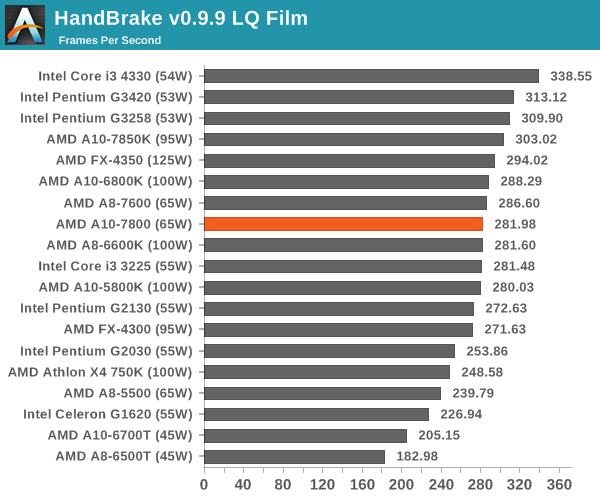
The latest Intel processors have the lead for low quality Handbrake conversion, and despite the generational gap between the FX-4350 and the A10-7800, the extra MHz is preferred here.

For large frame manipulation, the latest architectures mixed with the most threads perform best.
Agisoft Photoscan – 2D to 3D Image Manipulation: link
Agisoft Photoscan creates 3D models from 2D images, a process which is very computationally expensive. The algorithm is split into four distinct phases, and different phases of the model reconstruction require either fast memory, fast IPC, more cores, or even OpenCL compute devices to hand. Agisoft supplied us with a special version of the software to script the process, where we take 50 images of a stately home and convert it into a medium quality model. This benchmark typically takes around 15-20 minutes on a high end PC on the CPU alone, with GPUs reducing the time.
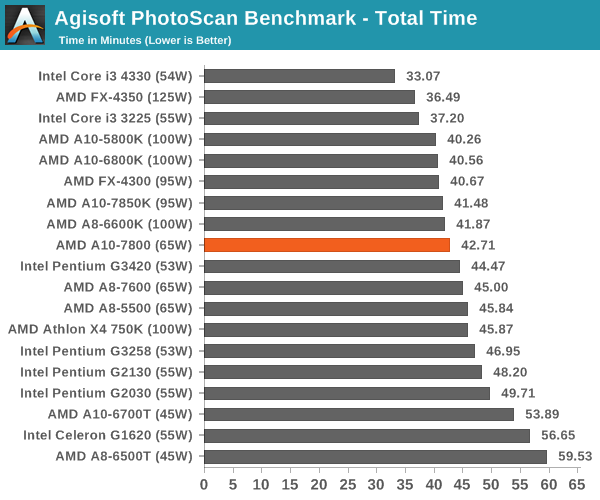
Dolphin Benchmark: link
Many emulators are often bound by single thread CPU performance, and general reports tended to suggest that Haswell provided a significant boost to emulator performance. This benchmark runs a Wii program that raytraces a complex 3D scene inside the Dolphin Wii emulator. Performance on this benchmark is a good proxy of the speed of Dolphin CPU emulation, which is an intensive single core task using most aspects of a CPU. Results are given in minutes, where the Wii itself scores 17.53 minutes.
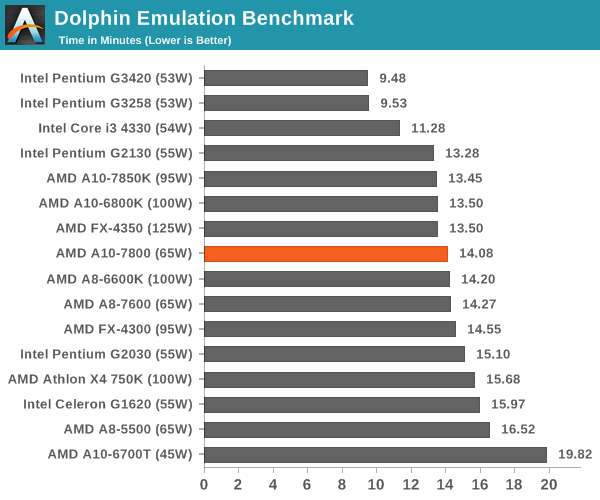
Dolphin seems to work best with high single core speed and Haswell.
WinRAR 5.0.1: link
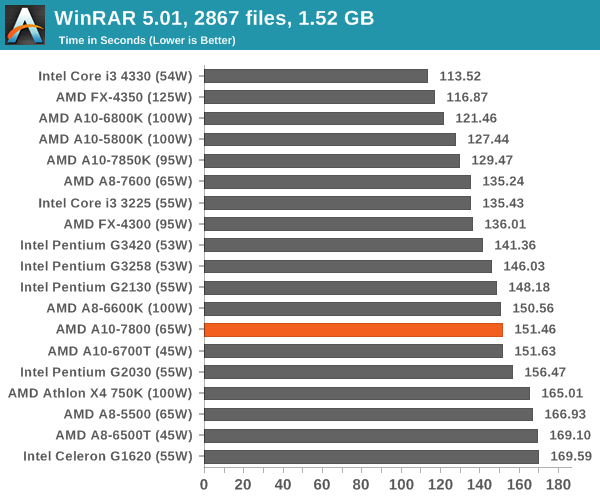
PCMark8 v2 OpenCL on IGP
A new addition to our CPU testing suite is PCMark8 v2, where we test the Work 2.0 and Creative 3.0 suites in OpenCL mode. As this test is new, we have not run it on many AMD systems yet and will do so as soon as we can.
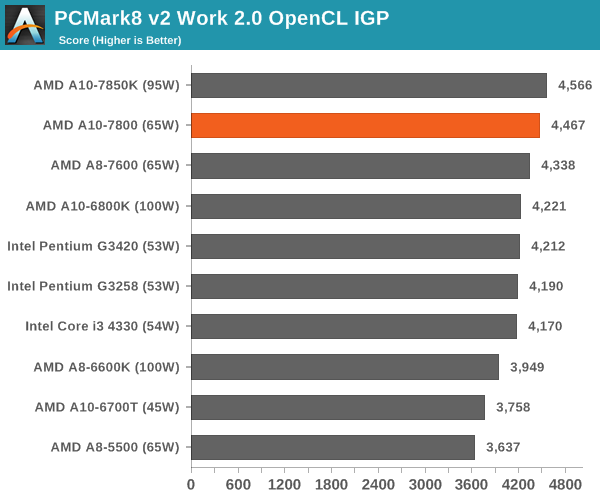
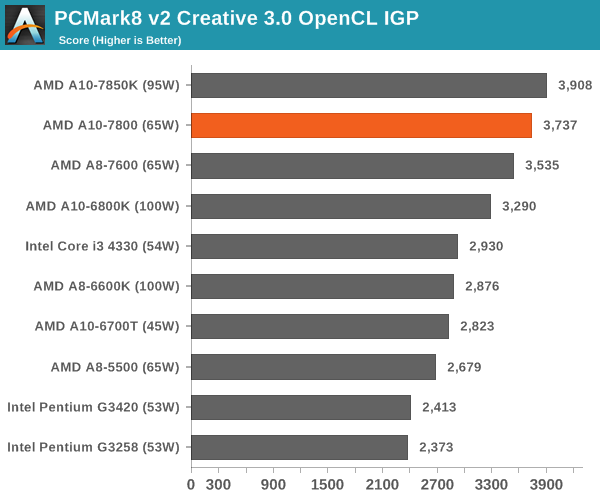
The combination of processor graphics and OpenCL support push the AMD APUs up to the top of our PCMark tests.
Hybrid x265
Hybrid is a new benchmark, where we take a 4K 1500 frame video and convert it into an x265 format without audio. Results are given in frames per second.
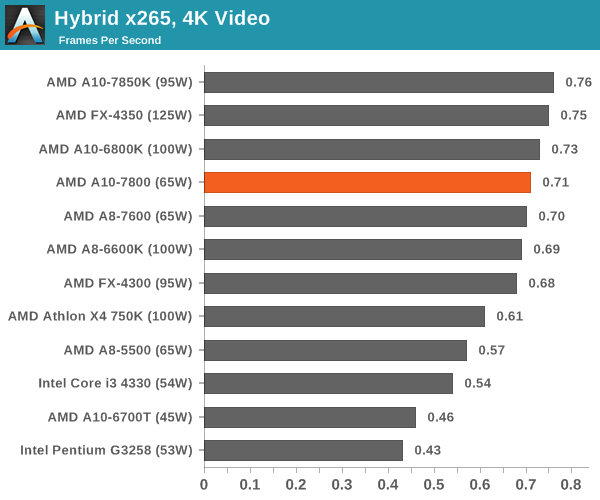
Cinebench R15


Cinebench is typically Intel territory for high IPC processors, but when it comes to multithreaded rendering, extra threads help.
3D Particle Movement
3DPM is a self-penned benchmark, taking basic 3D movement algorithms used in Brownian Motion simulations and testing them for speed. High floating point performance, MHz and IPC wins in the single thread version, whereas the multithread version has to handle the threads and loves more cores.
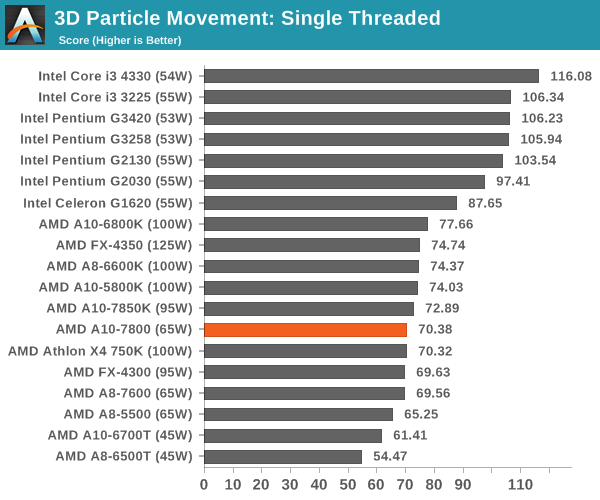
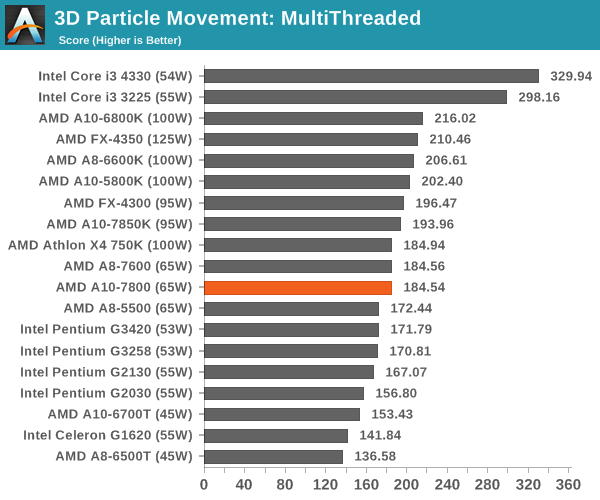
All the calculations in 3DPM deal with floating point numbers, a known sink for AMD compute.
FastStone Image Viewer 4.9
FastStone is the program I use to perform quick or bulk actions on images, such as resizing, adjusting for color and cropping. In our test we take a series of 170 images in various sizes and formats and convert them all into 640x480 .gif files, maintaining the aspect ratio. FastStone does not use multithreading for this test, and results are given in seconds.
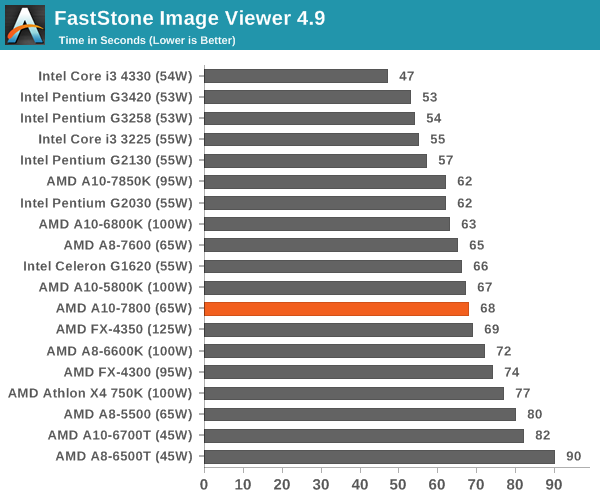
Web Benchmarks
On the lower end processors, general usability is a big factor of experience, especially as we move into the HTML5 era of web browsing. For our web benchmarks, we take four well known tests with Chrome 35 as a consistent browser.
Sunspider 1.0.2

Mozilla Kraken 1.1
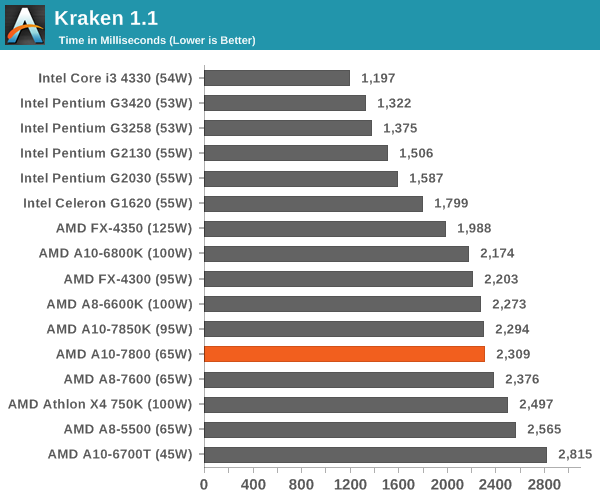
WebXPRT
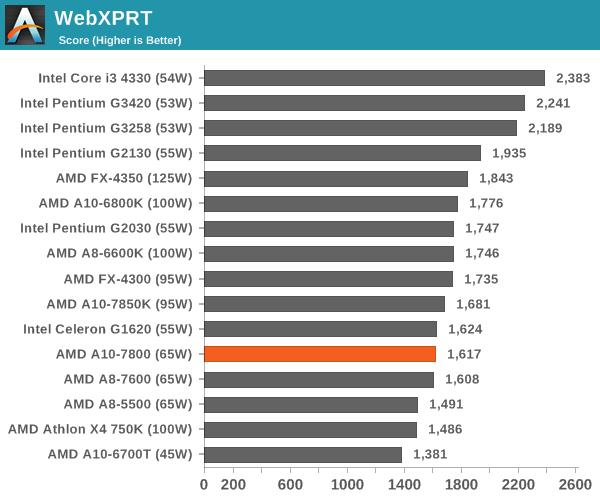
Google Octane v2
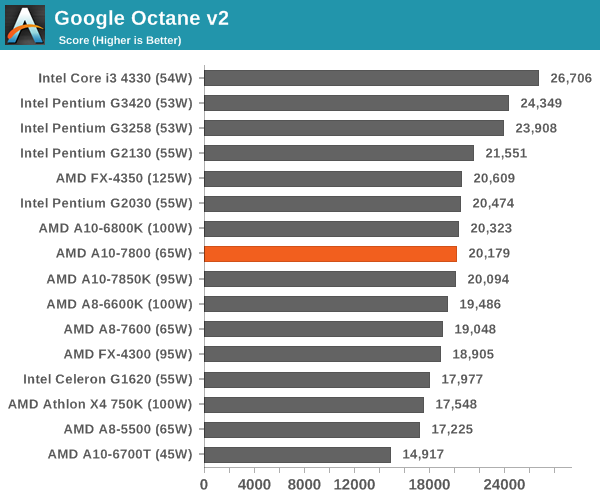










147 Comments
View All Comments
Cerb - Sunday, August 3, 2014 - link
Graphics, and monitor compatibility, up until Haswell. With Haswell, graphics performance (drawing, photo, video, CAD, etc.). Ivy Bridge's IGP, FI, couldn't keep the res right on my Dell 1080p monitors at work. This is 2014, and I still need a video card just for that? I can't speak to IB, but through SB AutoCAD's graphics would be glitchy with Intel's IGP (parts of a viewport not refreshed, or offset from where it should be), as another example. Haswell seems to have gotten rid of those problems.TiGr1982 - Sunday, August 3, 2014 - link
Core i7-3770K has HD 4000, not HD 3000 (Core i7-2600K/2700K had HD 3000).Wixman666 - Thursday, July 31, 2014 - link
REAL budget gaming machine? $45 socket 1150 motherboard, $75 Haswell Pentium G3420 dual core CPU, $120 Nvidia 750 Ti... $240 total. Good on CPU, and graphics runs circles around those both for the same price out of the gate. Forget the i5 or A10.tomsworkshop - Thursday, July 31, 2014 - link
Pentium G3420 - 53W TDPGeforce 750 Ti - 60W TDP
Total - 113W TDP
Form Factor - Full ATX / MicroATX
Pros - better CPU single threaded performance
Cons - higher TDP (more power consumption), higher noise level (more fans "CPU + GPU“), more heat, bigger size
A10-7800 - 65W TDP
Total - 65W TDP
Form Factor - MicroATX / Mini-ITX
Pros - lower TDP (less power consumption), lower noise level (less fan needed), lower heat, Small Form Factor, can hybrid crossfire with low profile discrete GPU
Cons - lower CPU single threaded performance
The_Assimilator - Friday, August 1, 2014 - link
Sure, let's totally ignore the fact that the 750Ti will annihilate the APU in gaming. Or that it's entirely possible to get mITX Intel motherboards.tomsworkshop - Friday, August 1, 2014 - link
sure u can find the mini-itx intel motherboard for G3420 + 750 ti, but the high TDP (higher power consumption) still the matter we will care on this days, and the A10-7800 system could fit in the console size thin and slim casing, while the G3420 + 750 Ti system will not.evilsudoer - Friday, August 1, 2014 - link
The calculation for power draw should probably take the idle numbers instead of the max. Or you could weight it to assume the cpu/gpu are idle 50-80% of the time.Someone who games 8 hours a day probably will get a discrete graphics card regardless of power costs.
tomsworkshop - Friday, August 1, 2014 - link
the owner of the cyber cafe with 50-100 units gaming rig will care for the power cost, if the APU with lower power consumption can handle the games in medium setting at least, they will go for it.Andrew Lin - Tuesday, August 5, 2014 - link
sorry, but this is actually a really stupid argument.tomsworkshop - Thursday, August 14, 2014 - link
yeah, i agree your argument are stupid, and why did u still leave this stupid comment here ?